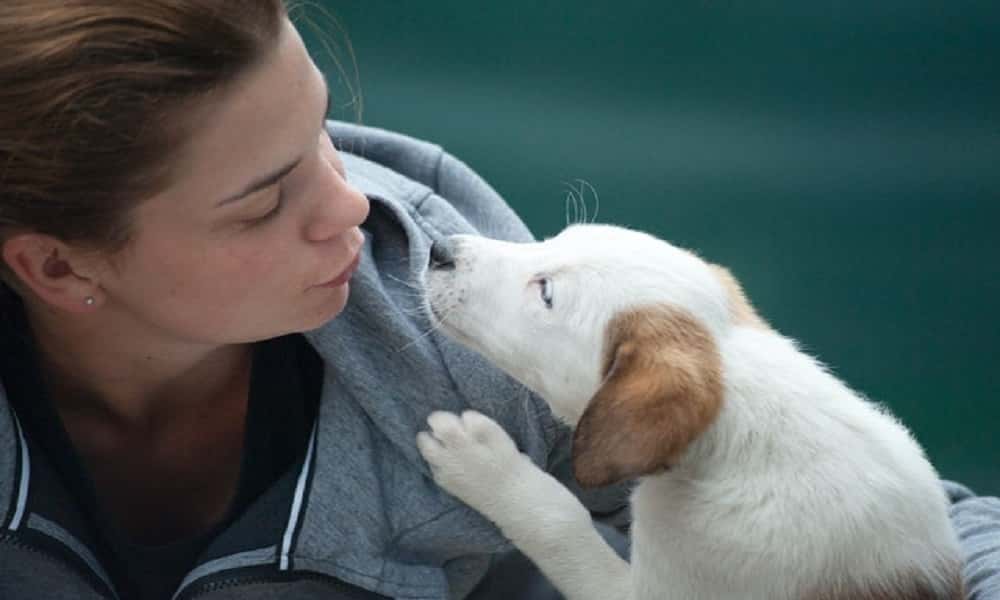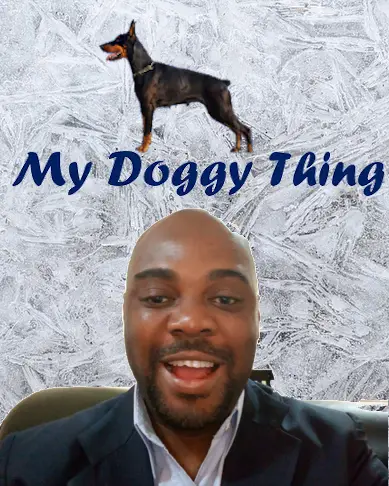HOW DO DOGS UNDERSTAND THEIR NAMES?

If you just brought a new puppy or dog home, chances are you have not named them yet. Even if you have a name in mind for them, they would likely not respond to it. As time passes your dog eventually starts to respond to the name you choose for him or her surprisingly. This makes you wonder at times, does my dog really understand that I am calling her name or is she just responding to the tone of my voice.
Well, the truth is that your dog responding to his or her name is a combination of different things. Basically, it is dependent on the dog. Some dogs are better at this than others.
So “How do dogs understand their names?”
Dogs use a combination of our body movement, facial expression, voice recognition, and deductive reasoning to make sense of our words. All these combined with positive experiences make your dog attach some meaning to your voice tones.
These words are not limited to his or her name but to any word that comes with a positive experience.
You see, when you call out to your dog, he or she cannot really make sense of what you are saying. They depend heavily on deductive reasoning from past experiences to make sense of the call. For example when you wake up in the morning and say to your dog “Good Morning Fido”, your dog is not saying to herself, my favorite person just said good morning and called my name.
No…
What your dog is thinking would be in the line of, there is my mum, she has made that noise that indicates she is in a good mood, I suspect things will go normally as they should go today.
Imagine yourself in a place where the language is strange but you have a host that is excited to have you around, talks a lot, and brings different goodies to you. That is the closest analogy to describe your dog’s understanding of the sounds you make when you speak to him or her.
In this place, deducing what your host is communicating would be heavily dependent on their body language, voice tone, and facial expression. Needless to say, if your host is not in a happy mood, you are likely to have a crappy day too.
Now you have a good insight into the question “how do dogs hear their names?” The next step is how you ensure that you get the proper response when you call your dog’s name.
The first thing you should do is to choose a good name for your dog and second thing is to train them properly to respond to the name.
CHOOSING A GOOD NAME FOR YOUR DOG.
A rule of thumb when choosing a name for your dog is to stick with names that have two syllables. Names like Bella, Max, or Coco fit into this category. Anything outside this makes it hard for your dog to relate to.
Remember, the essence of giving your dog a name is so that you can have something functional which you and your dog can relate to easily
TRAINING YOUR DOG TO RESPOND PROPERLY TO THEIR NAME.
Training your dog to respond properly to its name requires the use of positive reinforcement techniques. It doesn’t matter what name you chose for your dog, whether it’s Bella, Max, Coco, etc. Making the process enjoyable for your dog is the key to him or her learning the name quickly.
Arm yourself with some treats and if possible start the training in a quiet, enclosed area.
i.) Patiently wait till your dog’s attention is no longer on you, then call your dog’s name in a happy cheerful manner. Immediately he turns to you, give him a treat, and use words like “yes” and “good” to acknowledge his action. Repeat this several times a day till your dog starts to get the hang of it.
ii.) If it seems your dog is not responding to his or her name, choose a quieter location with less distraction and up the reward with something your dog will appreciate more e.g small pieces of cooked chicken. Always remember to praise them when they respond properly to their name.
iii.)Once your dog starts responding to their name, increase the difficulty bit by bit. You can change the location to a more noisy place or to a place with other forms of distraction are like a television set playing or people just going about their business.
The more the dog responds correctly, the more you increase the difficulty.
To get the best out of this method, you need to be consistent with it. Things will not go smoothly, you should be expectant of this, but keep going at it. People that don’t put in real effort to name their dogs still elicit some form of response, so if you are following the strategy above, you are likely going to get the best response from your dog.
THINGS NOT TO DO WHEN TEACHING YOUR DOG ITS NAME.
i.) Avoid attaching negative reactions especially at the beginning when calling out your dog’s name. No dog enjoys answering a call where they are going to be reprimanded. Now even though they can’t understand the language, they very much understand our body language, voice tone, and facial expressions.
ii.) When you are in a large open area, it’s best to keep your dog on a leash even as you train them to respond to their name. Dogs easily get distracted when exposed to large areas or to put it in perspective, large areas equate to more freedom, to explore and claim new territories. Also, the things that are a priority to them are just not the same for us. For example, investigating and researching a possible new site to potty. For us, that one time might be the only time we visit that area.
iii.)Avoid repeating their name multiple times when calling out to them. Doing this will create a conflict in your dog’s mind. For example, instead of answering the call “Coco”, your dog may be mixed up and start believing it’s “CocoCocoCocoCoco”. You see, they can easily get confused. Just call the name once and even if they don’t respond, give them a little time and call them again.
iv.) Avoid shouting or getting angry and aggressive at your dog when they don’t respond well to the command. Remember what we said earlier, any negative sentiment attached to the name would make your dog despise it and expect trouble when he or she hears the call.
If you suspect that your dog is being distracted or concentrating on something else during the training session, take them to another location and continue the training session.
v.) Do not use their name and other command words at the beginning of training your dog to respond to its name. The trick here is to get your dog to be responsive to his name and not to mix it up with another command.
When your dog gets good at responding to its name, you can take start using his or her name together with other commands but definitely not at the beginning of the training sessions.
A quick note, you may have adopted an older dog that already responds to a name and still decide to change the name. This is not a bad thing but you need to give this process time and lots of patience. It will not be like training a dog without a name. This dog is already responding to something and you are trying to change it.
Just like it takes people a long time to let others know when they change their name. The same thing applies to your dog. It will take them some time to respond properly to the new name. Making the process fun and rewarding for the dog is key to succeeding in the name change.
DO DOGS KNOW YOUR NAME?
If you have been staying with your dog for some time now, the answer is probably yes. You see like we said above, our dogs are always studying us to understand what makes us tick, in addition to understudying our body movement, expressions, and voice tone, it is obvious that the sound of our name makes us react. The sound of our name can easily shift our focus from what we were concentrating on or doing to something else. Be rest assured, your dog notices all these interactions and can link them to the sound that causes us to act like this. Not to mention that in a household, your name would be mentioned multiple times to the extent that it would be impossible for your dog not to notice the sounds that make up your name.
The last word, our dogs would eventually know the sound of our names in the household, but if you want to hasten the process for a newly-adopted dog in the household, you may consider playing a game called Family circle with all members of your family and your new dog.
It goes like this. With everyone sitting down and armed with a treat, you say to the dog, where is Tommy? if he or she goes to Tommy correctly, Tommy gives him a treat. Tommy may now say where is Sandra? If your dog locates Sandra, he or she gets a treat from Sandra.
When they go to the wrong person, they get no treat. This game will help your dog to be stimulated mentally and more importantly, bond with members of your family in a positive way.
IN CONCLUSION
Our dogs naturally are social creatures, they would do anything to get along well with us in the house. Understanding the sound of the name we give them and even the sound of our own name is one of the many actions and learning curves that our dogs undertake to make it easy for them to live with us and get the necessary care and attention they need. So the next time you call your dog and they respond, why not remember to make them feel special and let them know their efforts are not in vain.

Hi, I am Charles Nwankwo Editor-in-Chief, Mydoggything.com. Gleaning from Professional Dog Trainers, behaviorist, Registered Veterinarians, and Breeders. We are passionate about making dog care easy for you. My job is to make sure that you get the best-updated dog care information to understand and take care of your dog or dogs.
